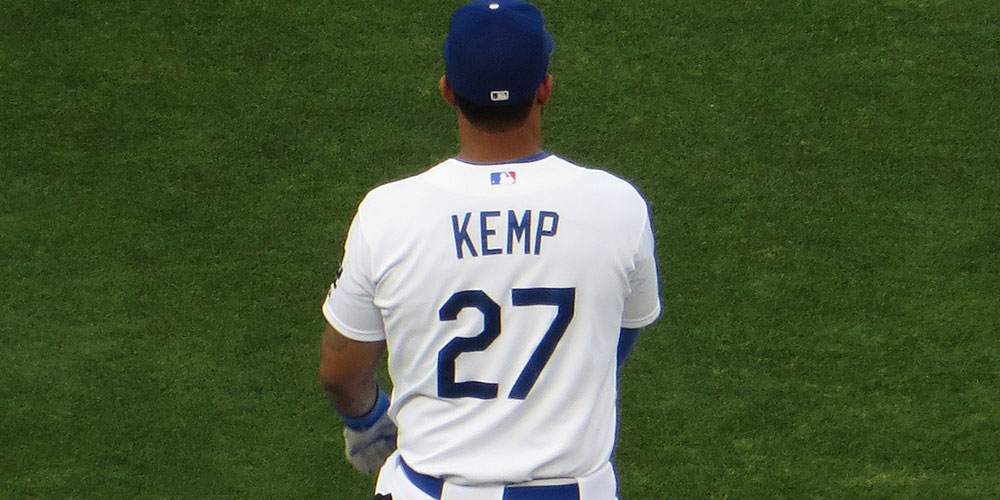
Back when the Dodgers were spending like $300 million a year on players, the team was much easier to write about because the luxury tax barely needed to be given a second thought. Pesky things like payroll limitations just weren’t something we needed to factor in, barring the ridiculous. But as Stan Kasten has always promised, the Dodgers are reining spending in a bit now, or at least until they could reset the luxury tax penalties. That seemed obvious after they passed on Giancarlo Stanton, but with the recent blockbuster Charlie Culberson trade, the mandate to get below the luxury tax in order to spend freely again became clearer than ever.
How much against the luxury tax did the Dodgers save yesterday?
While the trade definitely saved on payouts to players in 2018, that wasn’t the motivation. Rather it was shedding money from the luxury tax number that was of importance. Adrian Gonzalez, Scott Kazmir, Brandon McCarthy, and Culberson would’ve counted around ~$50 million against the Dodgers in 2018, whereas Matt Kemp and the cash sent to the Braves costs ~$21 million. That saves the team about $29 million for the upcoming season, which not only allows them to reset the luxury tax, but also affords them room to maneuver in 2018.
How much under the luxury tax are the Dodgers now?
To make a long story short, when Eric Stephen did his calculations to find what the Dodgers luxury tax number was at the moment, he came up with ~$175 million. When I did my own computing, I came up with ~$176 million, and the difference could honestly come down to rounding choices. So with the luxury tax threshold checking in at $197 million, that means the Dodgers have ~$21 million to work with.
So the Dodgers can go out and make a splashy signing now, right?
Er, not quite. Remember, the Dodgers likely at least want further upgrades in the pen (Tom Koehler is already being added), so that’s going to occupy some of the room. Additionally, performance bonuses count against the luxury tax. Clayton Kershaw finishing Top 3 in Cy Young Award voting seems like a given, so that’s gonna cost between $500,000 and $1 million. Meanwhile, Kenta Maeda‘s contract is great for the Dodgers, but it also means Maeda is almost a lock for $6 million to $8 million in bonuses should he stay healthy. Plus, this front office has always made significant moves at the deadline, and they likely want to continue to do so, but that’s something they can’t do if they exhaust all room below the luxury tax now.
Fine, but this still sets the Dodgers up for the future, right?
Yes. Next year the Dodgers lose Yasmani Grandal, Logan Forsythe, and Hyun-Jin Ryu to free agency, and Kershaw likely opts out. Assuming the Dodgers don’t want to incur the harshest penalties at over $247 million, the Dodgers should still have over $100 million to work with, which obviously leaves plenty of room to re-sign Kershaw and go after somebody like Bryce Harper. Especially true since the Dodgers would only really have a need at second base besides re-signing Kershaw (or maybe not at all if Chris Taylor moves there).
Also, I wouldn’t rule out the possibility of the Dodgers somehow miraculously moving Kemp with prospects and/or trading Grandal to go after additional space. Ken Gurnick named Andrew McCutchen (~$15 million) and Lorenzo Cain (~$16 million) as options, but honestly with extra room it’s possible to go after any player on a contract that isn’t Stanton-esque (~$25 million). Say Chris Archer (~$4 million), Gerrit Cole (~$7 million), Christian Yelich (~$7 million) or something of that sort.
——
While yesterday’s trade may not provide the splash Dodgers fans have wanted all off-season in terms of adding to the 2018 squad, with a bit more work, it definitely opens up possibilities for further additions either before Spring Training or at the Trade Deadline. Furthermore, it injects a bit of optimism into the future after the team basically took L after L this offseason. Assuming the ownership will once again okay going over the luxury tax in 2019, the Dodgers can now truly spend like one of the richest teams in baseball next off-season without worrying much in terms of penalties.
Seems like it’s gonna be an interesting year ahead of keeping track of the luxury tax number, followed by a year of figuring out exactly who the Dodgers want to add. Regardless, the Dodgers are undoubtedly setup for the future better today then they were yesterday, and it’s something to get optimistic about at least.
 Dodgers Digest Los Angeles Dodgers Baseball Blog
Dodgers Digest Los Angeles Dodgers Baseball Blog